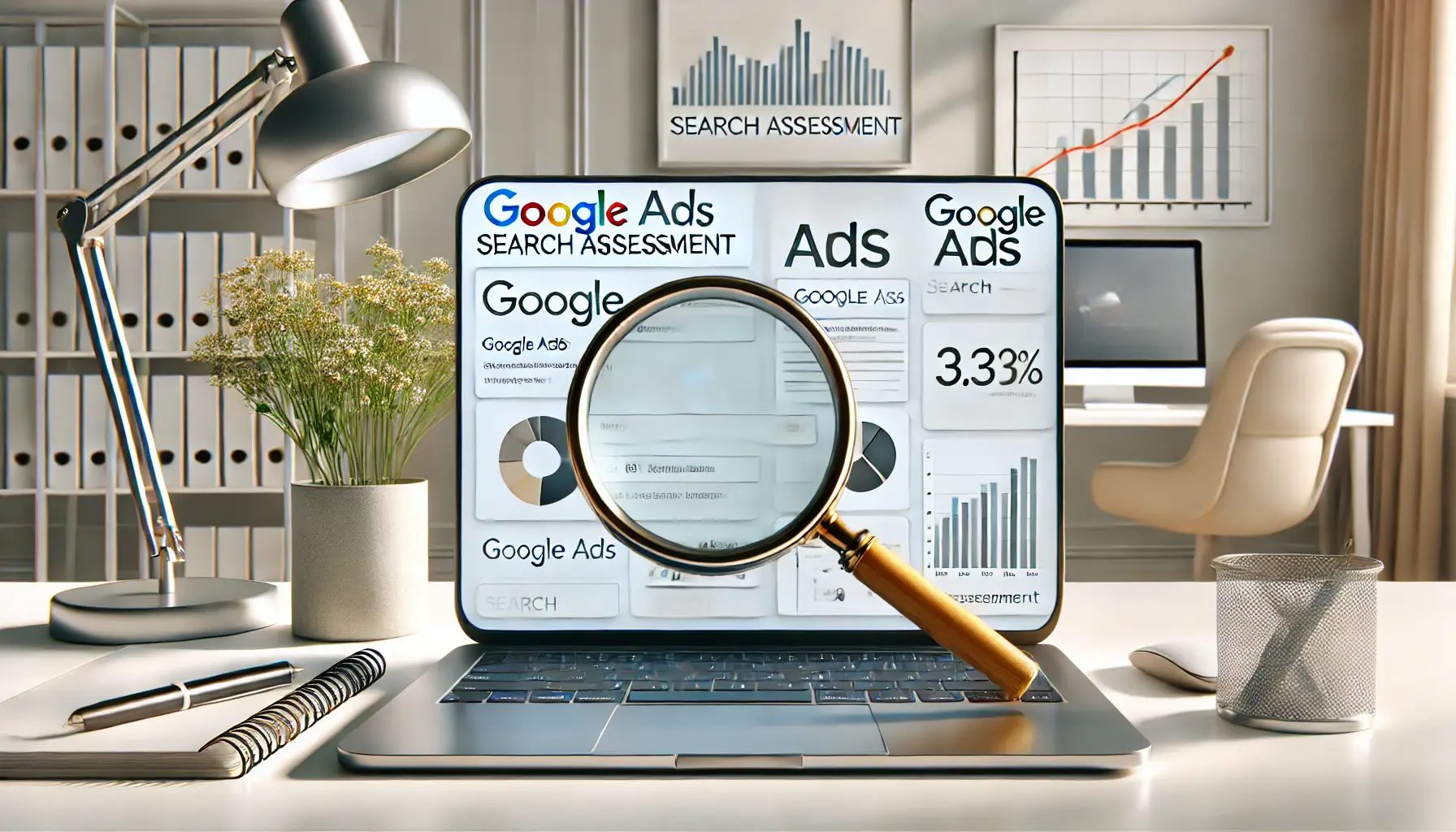Among the competitive landscapes of digital advertising, attaining ad relevance has grown into one of the most important success factors in the utilization of Google Ads.
However, the question might be: what does ad relevance really mean, and why is it important to your campaigns?
Ad relevance refers to how well your ad matches the user’s search intent and overall interests, influencing not only the visibility of your ads but also their performance and cost-efficiency.
When ads resonate with the intended audience, engagement rates—and therefore conversions—increase.
Additionally, there is a positive return on investment (ROI).
By understanding and optimizing ad relevance, you can ensure your ads reach the right person, at the right time, and in the right context.
In this article, we delve into the details, exploring strategies and insights that will be helpful in the creation of ads that best resonate with your audience.
- Understanding Ad Relevance in Google Ads
- Crafting Ads for Maximum Relevance
- Increasing Ad Relevance Using Audience Insights
- Improving Ad Relevance Score in Google Ads
- Tools and Techniques to Ensure High Ad Relevance
- Maximizing Ad Relevance to Excel in Google Ads
- Questions Commonly Asked About Ad Relevance in Google Ads
Understanding Ad Relevance in Google Ads
Ad relevance in Google Ads refers to how closely an ad’s content aligns with a user’s query and overall intent.
When users see more relevant ads based on their needs and interests, they’re more likely to engage.
This engagement results in better click-through rates (CTR), improved ad rankings, and potentially lower costs per click (CPC) due to enhanced Quality Scores.
Ad relevance is not solely about keyword matching; it’s about creating an ad experience that feels tailored to the user’s intent and interests, thereby boosting the effectiveness of your campaigns.
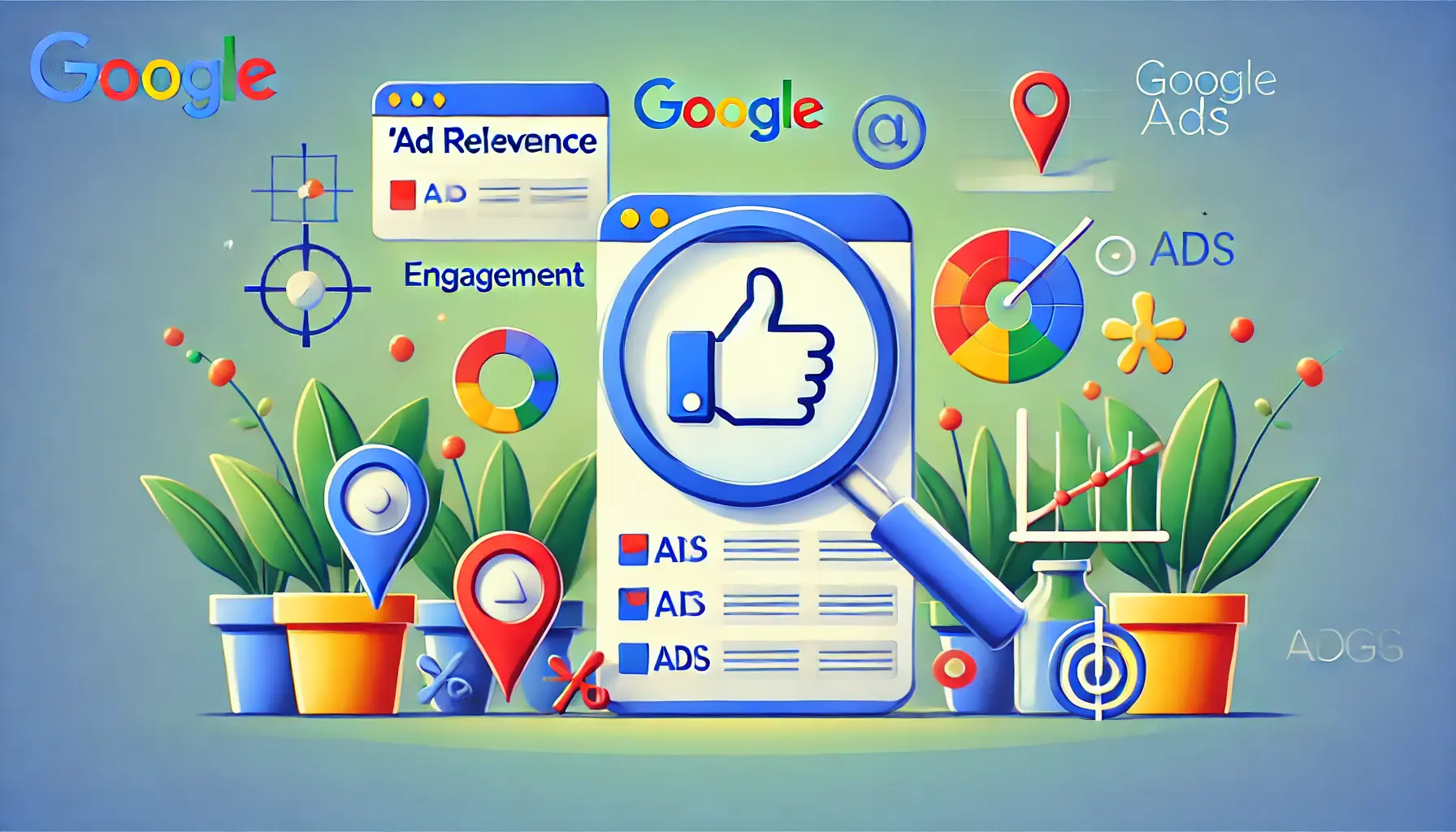
Illustration of ad relevance and its importance in Google Ads.
What is Ad Relevance and Why It Matters
Ad relevance plays a central role in determining the success of your Google Ads campaigns.
A high ad relevance score means that your ads closely align with user expectations, leading to improved engagement and a higher Quality ScoreA Google Ads metric that indicates the relevance of an ad in relation to keywords and landing page..
Quality Score, a significant metric used by Google to gauge ad performance, directly impacts ad rankings and CPC.
High ad relevance not only boosts your visibility in search results but also maximizes your budget by lowering the cost of each click.
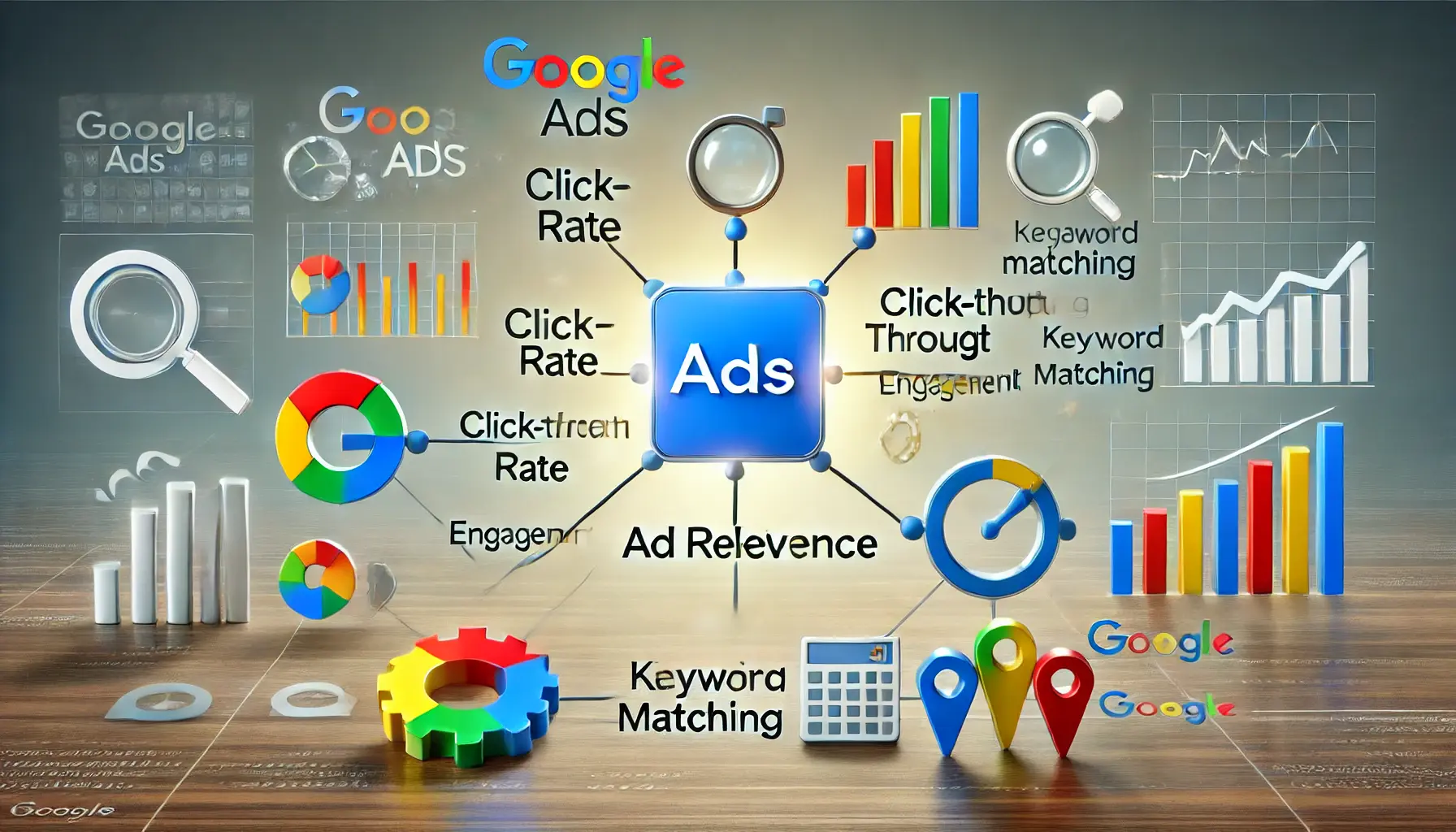
Illustration of the process Google uses to measure ad relevance.
How Google Measures Ad Relevance
Google measures ad relevance through several factors.
One of the most critical elements is the relationship between keywords and the ad content.
Additionally, Google considers how well your landing page aligns with the user’s search query, providing an end-to-end experience from the ad click to the website visit.
By analyzing click-through rate (CTR) and the relevance of your ad copy to user intent, Google calculates an ad relevance score, which can significantly impact ad performance in auctions.
High ad relevance not only improves your Quality Score but also has tangible benefits for your campaign’s performance.
High-relevance ads are more likely to appear in top positions, generating more clicks and conversions.
Lower CPCs make your campaign more cost-effective, allowing you to extend your budget further.
When your ad relevance is high, users connect with your messaging, which increases the likelihood of engagement and ultimately boosts overall ROI.
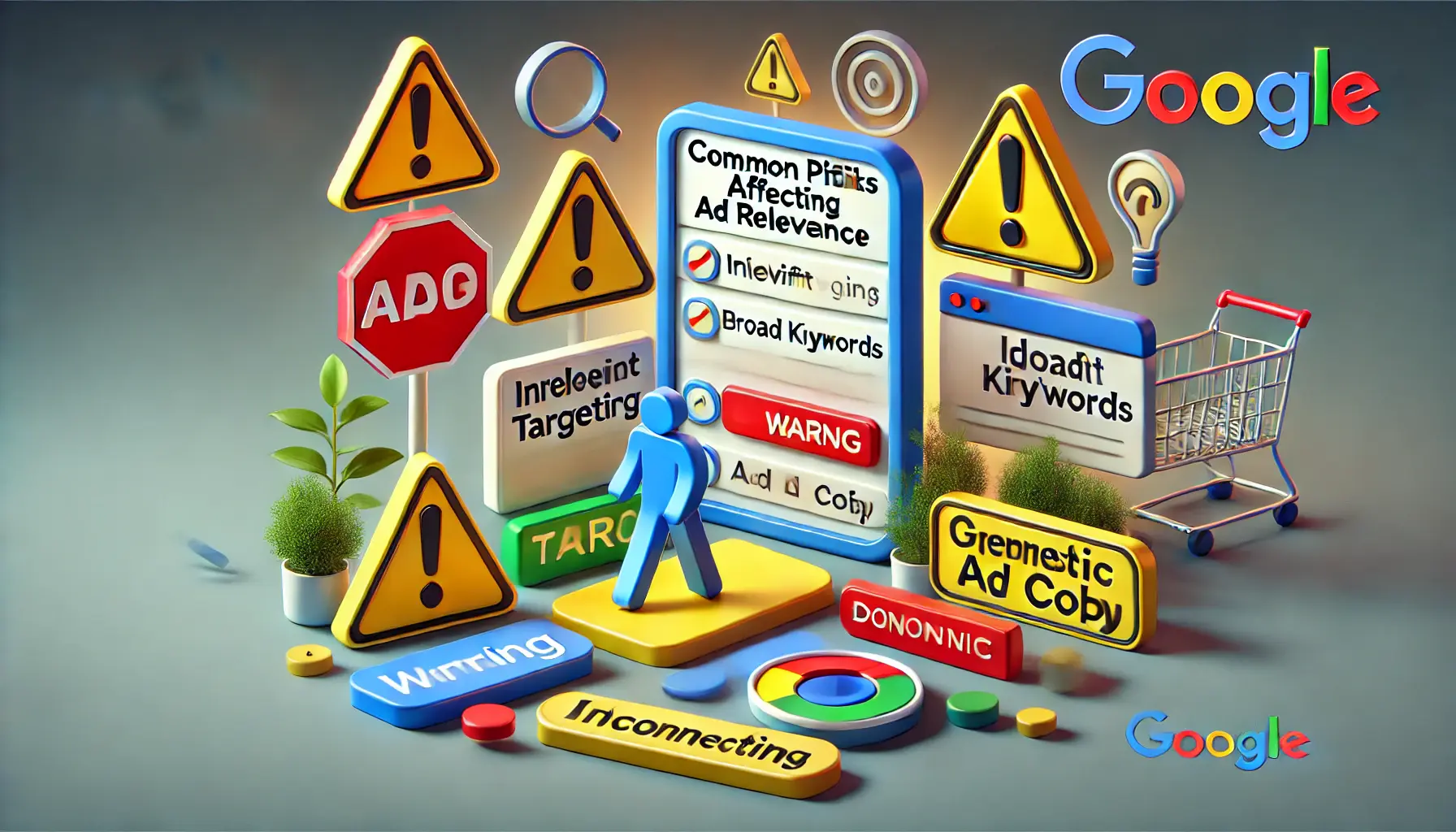
Illustration of common pitfalls that reduce ad relevance in digital advertising.
Common Pitfalls Affecting Ad Relevance
Several common mistakes can lower your ad relevance score during campaign management.
Examples include using overly broad keywords without considering user intent, crafting generic ad copy, and failing to optimize landing pages effectively.
Additionally, neglecting to update and test ad content regularly can cause relevance scores to drop over time.
By recognizing and avoiding these pitfalls, you can maintain a high ad relevance score and enhance the success of your campaigns.
Ad relevance aligns your ads with user intent, increasing engagement, CTR, and overall ad performance.
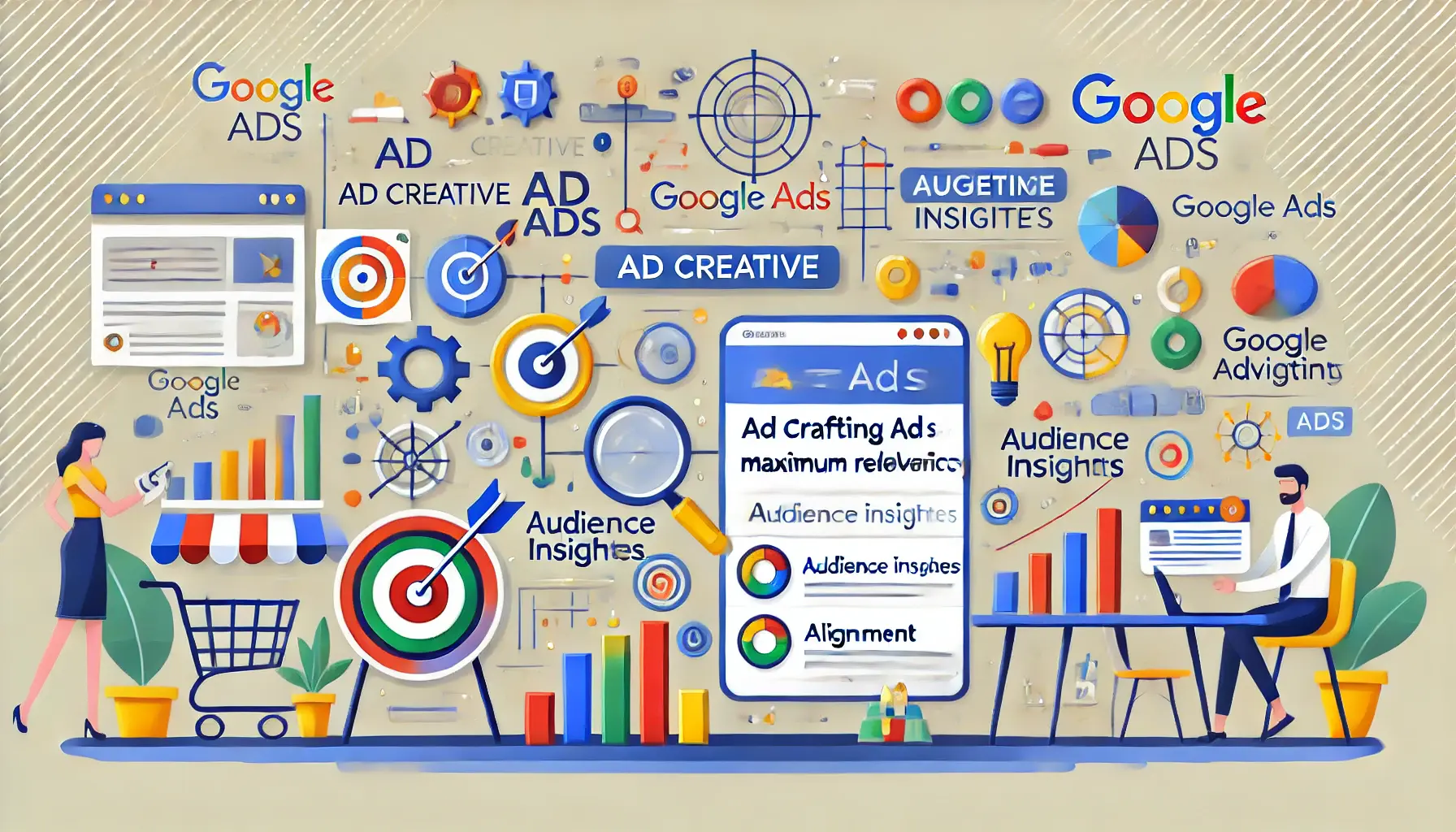
Illustration of strategies for crafting highly relevant ads in Google Ads.
Crafting Ads for Maximum Relevance
Ad creation in Google Ads goes far beyond merely adding keywords.
It’s an art of crafting a message that resonates with user intent, identifying the right audience, and refining ad formats for the optimal experience.
By focusing on these aspects, you can enhance ad relevance and engagement, ultimately optimizing your campaigns for better returns.
Let’s dive into some of the key practices that help maximize relevance with ad creatives in Google Ads.
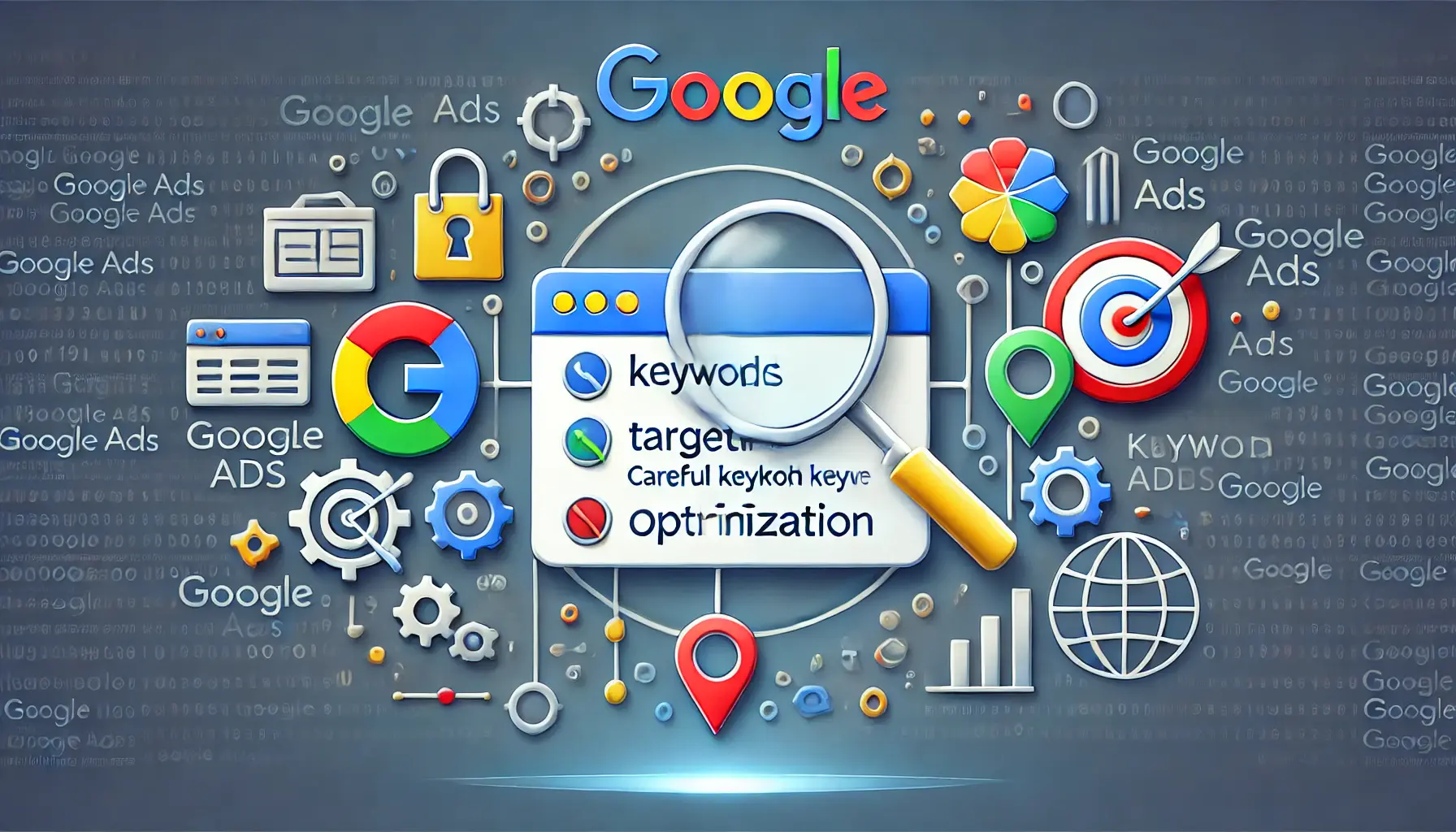
Illustration of keyword selection and optimization in Google Ads for relevance.
Choosing Relevant Keywords and Optimizing Them
The relevance of ads is fundamentally rooted in keyword selection.
Choosing keywords that capture user intent and align closely with your ad’s message is crucial.
Here are some tips to enhance keyword relevance:
- Use long-tail keywords: These longer, more specific phrases help target users who are closer to making a purchasing decision, making your ad more relevant to their search intent.
- Perform regular keyword research: As industry trends and user behaviors evolve, updating your keyword list helps keep your ads relevant and effective for searchers’ queries.
- Match keywords with ad copy: Ensure that your chosen keywords appear naturally within your ad copy to increase relevance scores and attract qualified clicks.

Illustration of crafting compelling and relevant ad copy in Google Ads.
Creating Compelling and Relevant Ad Copy
Writing ad copy that your audience can relate to is essential for ad relevance.
Engaging ad copy that speaks directly to user needs results in higher engagement.
Here’s how to create effective ad copy:
- Appeal to user pain points: Identify common challenges faced by your audience and craft an ad message that directly addresses those needs.
- Include a strong call-to-action (CTA): Use action-oriented phrases that prompt users to take the next step, such as ‘Sign Up,’ ‘Get Started,’ or ‘Learn More.’
- Highlight unique selling points (USPs): Emphasize what sets your product or service apart, such as unique features or exclusive benefits.
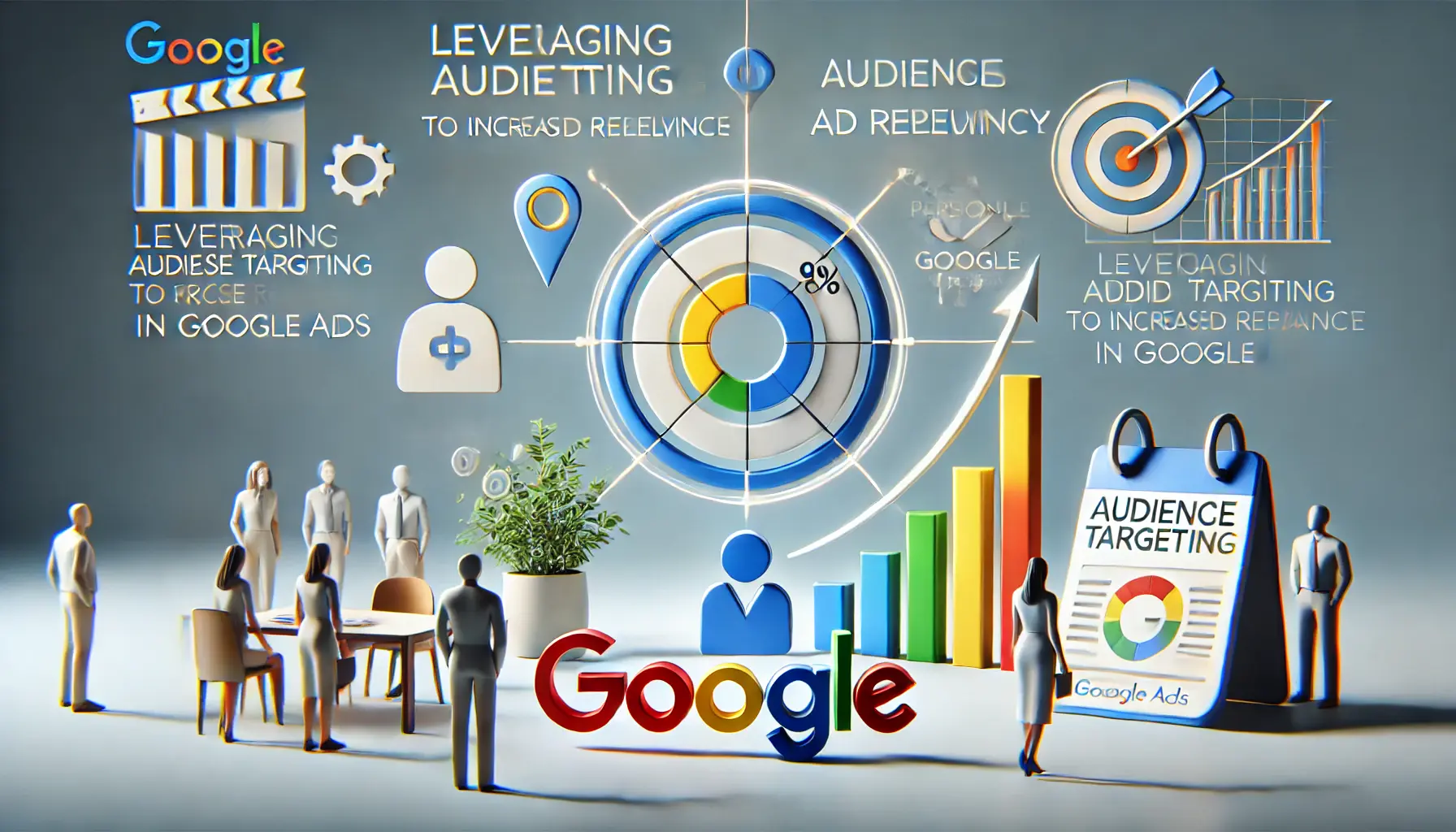
Illustration of audience targeting to enhance ad relevance in Google Ads.
Leveraging Audience Targeting to Increase Relevance
Audience targeting is a powerful way to increase ad relevance, ensuring your ads reach users who are most likely to be interested.
Google Ads offers a range of targeting options to help refine your audience, including:
- Demographic targeting: Specify audience demographics like age, gender, and income level to reach desired segments.
- Interest and behavioral targeting: Leverage Google’s data on user interests and behaviors to build targeted audiences based on their online activities.
- Custom audiences: Define custom audiences based on specific interests, search terms, or website interactions to further improve ad relevance.

Illustration of selecting ad formats to improve relevance in Google Ads.
Choosing the Right Ad Format for Relevance
Selecting the right ad format can significantly enhance ad relevance by providing a more engaging user experience.
Google Ads offers various ad formats tailored to different campaign goals and audience preferences, including:
- Responsive Search Ads: These ads adjust their content automatically, showing the most relevant headlines and descriptions based on user behavior.
- Image and Video Ads: Visual content can leave a lasting impression on users, especially for display campaigns targeting those in the discovery phase.
- Shopping Ads: For e-commerce businesses, these ads offer users a glimpse into product details, prices, and availability, making them highly relevant for product-focused searches.
By focusing on keyword selection and optimization, creating relevant ad copy, targeting the right audience, and choosing suitable ad formats, you can significantly enhance ad relevance in Google Ads.
This approach will help your campaign capture user attention and drive engagement.
Craft ads with tailored messages, audience targeting, and optimized ad formats for better engagement.

Illustration of leveraging audience insights to boost ad relevance in Google Ads.
Increasing Ad Relevance Using Audience Insights
Understanding how to use audience insights can make all the difference in ad relevance for Google Ads.
By delving deeper, you can fine-tune your ad targeting using demographic, interest, and behavioral data to ensure that ads are shown to users who are most likely to engage.
Leveraging these insights enables you to create more personalized and effective ad campaigns that foster engagement and drive ROI.
Let’s explore how a better understanding of your audience can lead to strategies that improve ad relevance.
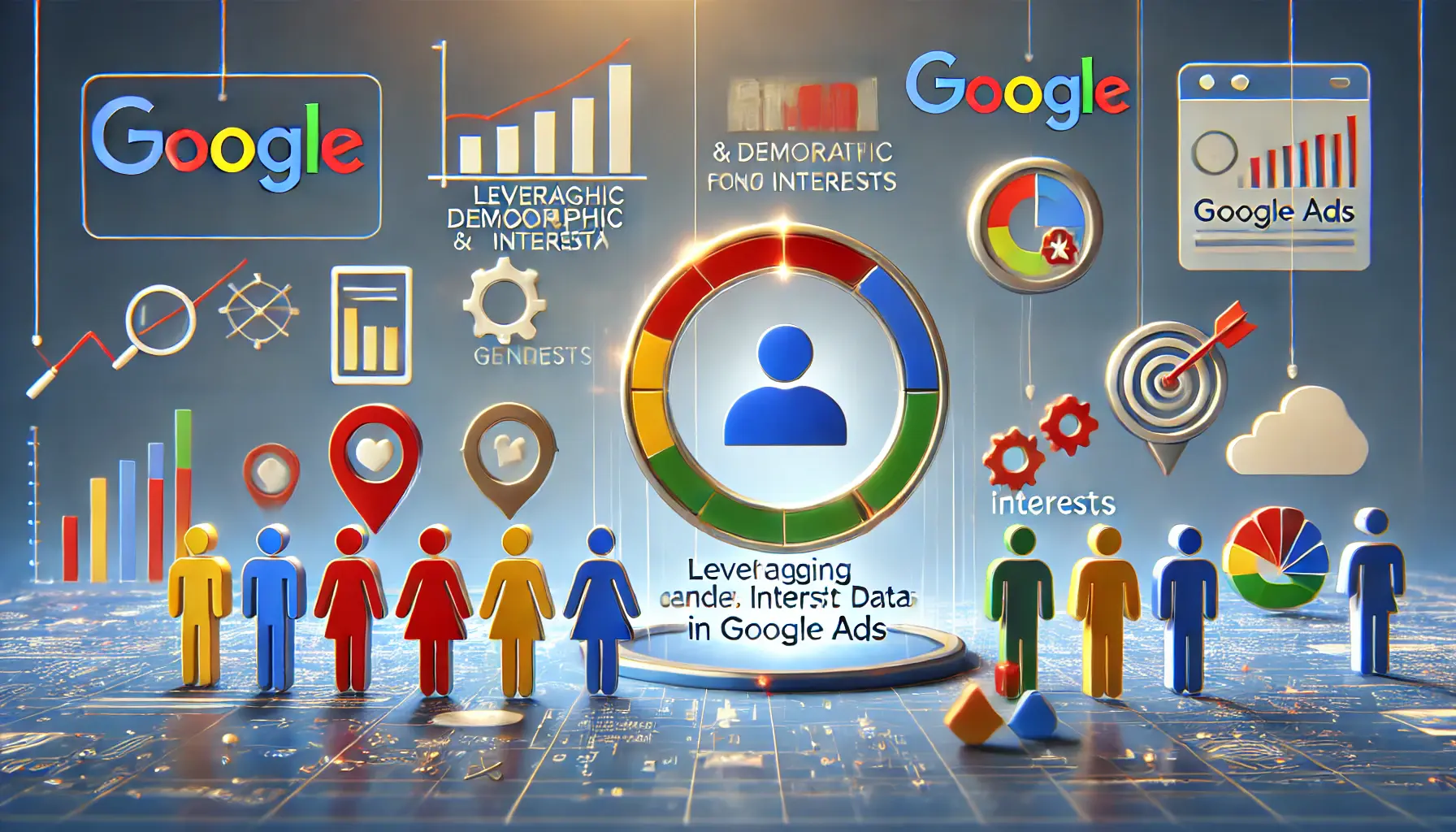
Illustration of leveraging demographic and interest data for targeted advertising in Google Ads.
Leverage Demographic and Interest Data
Demographic and interest data provide insights into the profile and preferences of your target audience.
By analyzing this information, you can identify which segments are most likely to engage with your ad and refine your targeting criteria accordingly.
Here are some ways you can leverage demographic and interest data:
- Targeting Age and Gender: Refine your ads to reach specific age brackets and genders that align with the ideal customer profile of your product, helping ensure that your message reaches the right audience.
- Targeting Income Level: Tailor your ad for specific income groups, particularly if your product is designed for premium or budget-conscious users.
- Interest-based targeting: Use data on user interests to customize your ads to what users are actively exploring or engaging with, increasing the chances of resonating with them.
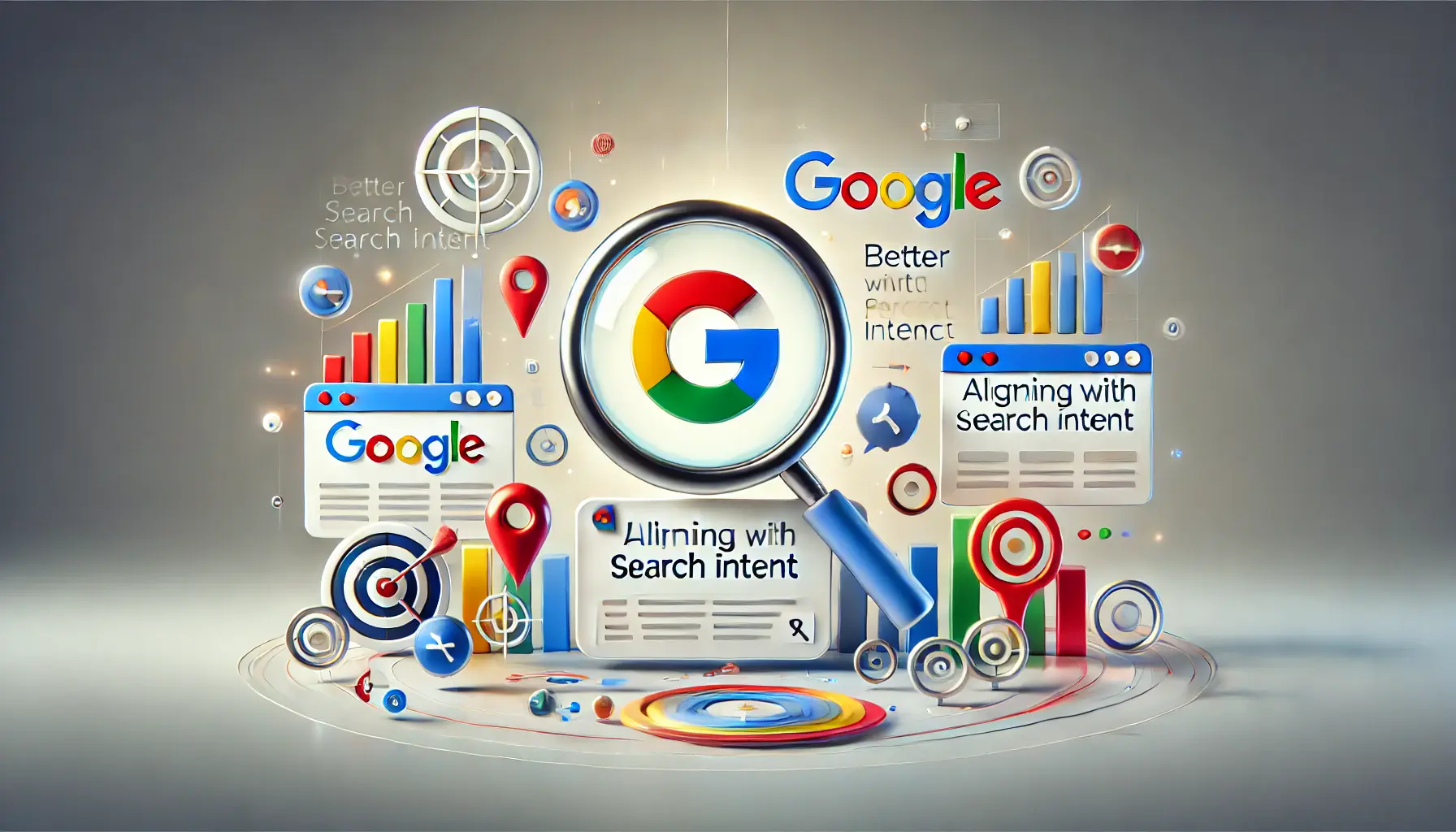
Illustration of using search intent to improve ad placement in Google Ads.
Utilizing Search Intent for Better Ad Placement
Creating relevant ads that align with search intent is crucial in connecting with what users are looking for.
By focusing on intent, you ensure that your ads appear when users are ready to engage or convert.
Here are some strategies to improve ad placement through search intent:
- Target high-intent keywords: Identify keywords that signal purchase intent, such as ‘buy,’ ‘get,’ and ‘download,’ to focus on users closer to making a buying decision.
- Use negative keywords: Exclude irrelevant searches that don’t align well with your ad message. This helps control ad placements and enhance relevance.
- Align ad copy with user intent: Ensure that your ad messaging reflects the specific needs or desires underpinning the user’s search intent.

Illustration of personalized advertising for enhanced ad relevance in Google Ads.
Personalization for Relevance of Ads
Personalization is a powerful way to make ads more relevant to users by addressing their unique needs.
Google Ads provides tools for dynamic ad personalization, making your ads more engaging.
Here are some ways to boost relevance through personalization:
- Dynamic keyword insertion: Automatically insert user search terms into your ad copy, making the message feel more personalized and relevant.
- Location-based targeting: Customize ads based on the user’s geographic location for greater contextual relevance.
- Remarketing lists for search ads (RLSA): Target users who have previously interacted with your website to encourage return visits and conversions.
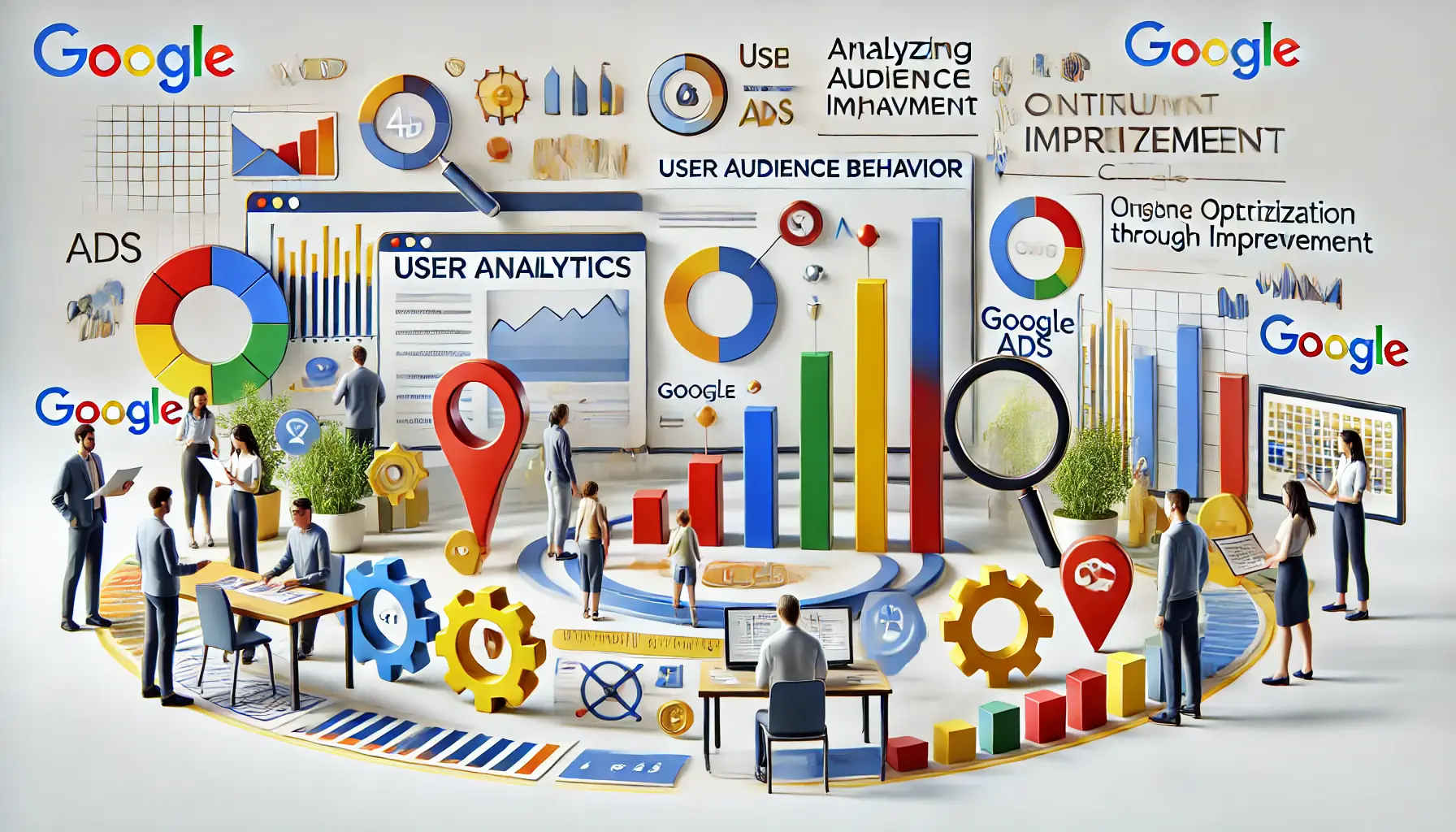
Illustration of analyzing audience behavior for ongoing ad improvement in Google Ads.
Analyzing Audience Behavior for Continuous Improvement
Analyzing audience behavior provides valuable insights to continuously refine and optimize your campaigns.
By tracking user responses to different ad elements, you can adjust and improve ad relevance over time.
Here are methods to enhance performance based on audience behavior:
- Monitor engagement metrics: Track metrics like CTR, conversion rates, and time spent on landing pages to gauge how well your ads resonate.
- Run A/B testing: Regularly test multiple versions of your ads to identify which elements are most effective with your audience.
- Update targeting based on new insights: Refine audience segments as you gather data, ensuring your ads remain relevant and meet user expectations.
By harnessing audience insights, you can build ads that address the specific needs and interests of your target users.
This approach not only enhances ad relevance but also fosters stronger connections with your audience, leading to more successful campaigns.
Audience insights refine targeting, aligning ads with users most likely to engage, thereby maximizing relevance.

Illustration of strategies to enhance ad relevance score in Google Ads.
Improving Ad Relevance Score in Google Ads
In Google Ads, ad relevance score plays an essential role in determining how closely your ad aligns with the user’s search intent and needs.
This score directly impacts your Quality Score, which in turn influences ad placement and the cost per click (CPC).
Improving your ad relevance score can help your ads rank higher in search results at lower costs, making campaigns more efficient and effective.
Let’s look at how to optimize ad relevance score in Google Ads for better performance.
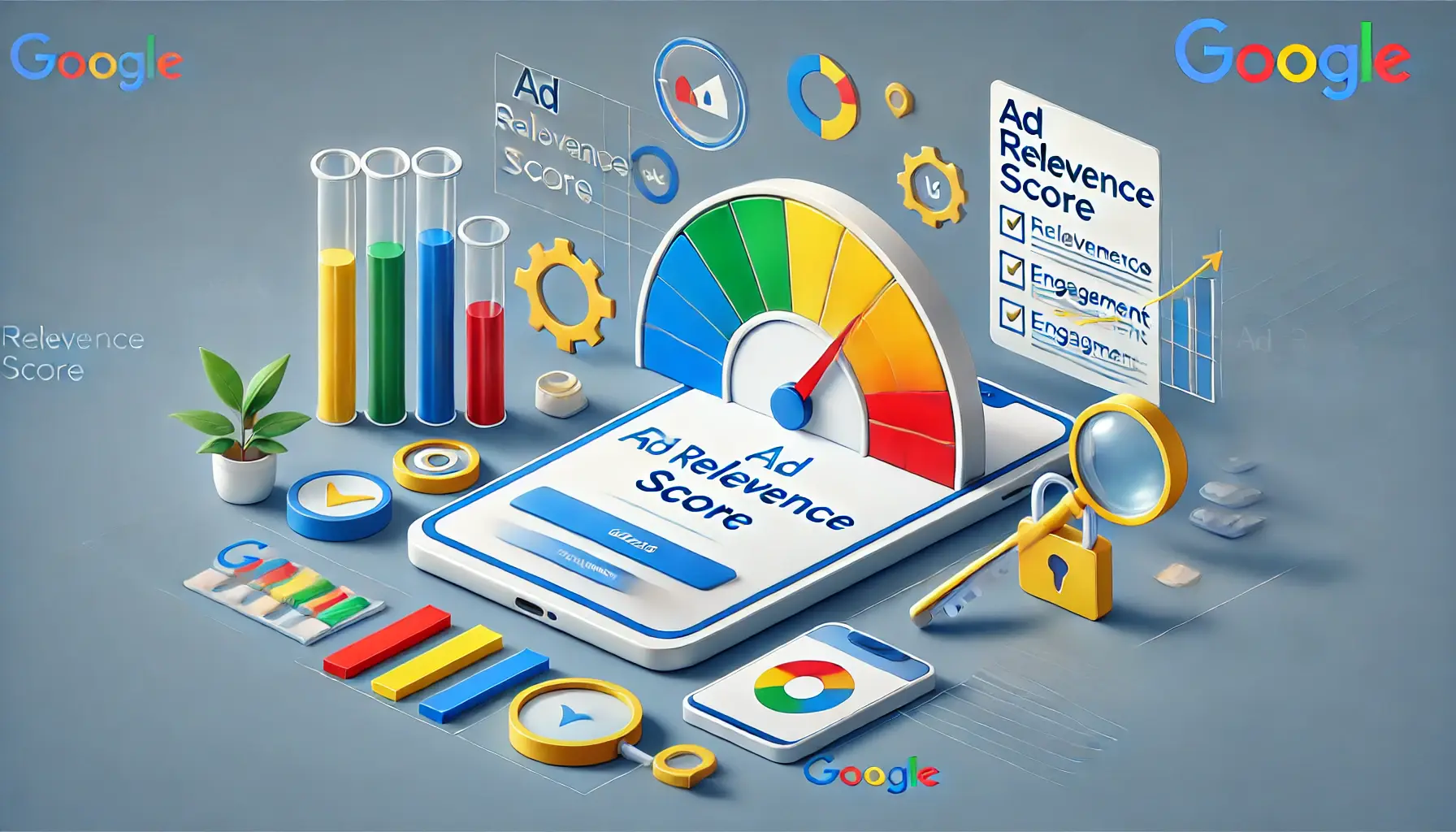
Illustration of the importance of ad relevance score in Google Ads.
What is Ad Relevance Score and Its Importance
Ad relevance score is a measure Google uses to assess how relevant your ad is to the target keywords.
A high ad relevance score indicates that your ad copy, keywords, and landing page align well with what users are searching for, positively impacting your Quality Score.
A higher Quality Score leads to better ad positions, higher click-through rates (CTR), and reduced CPC.
Here’s why ad relevance score matters:
- Better ad position: The more relevant your ad, the greater the chance it has of showing up in top positions on search results pages.
- Cost savings: A high ad relevance score can lower CPC, maximizing your advertising budget.
- Increased engagement rates: Relevant ads attract more attention, encouraging clicks and conversions.
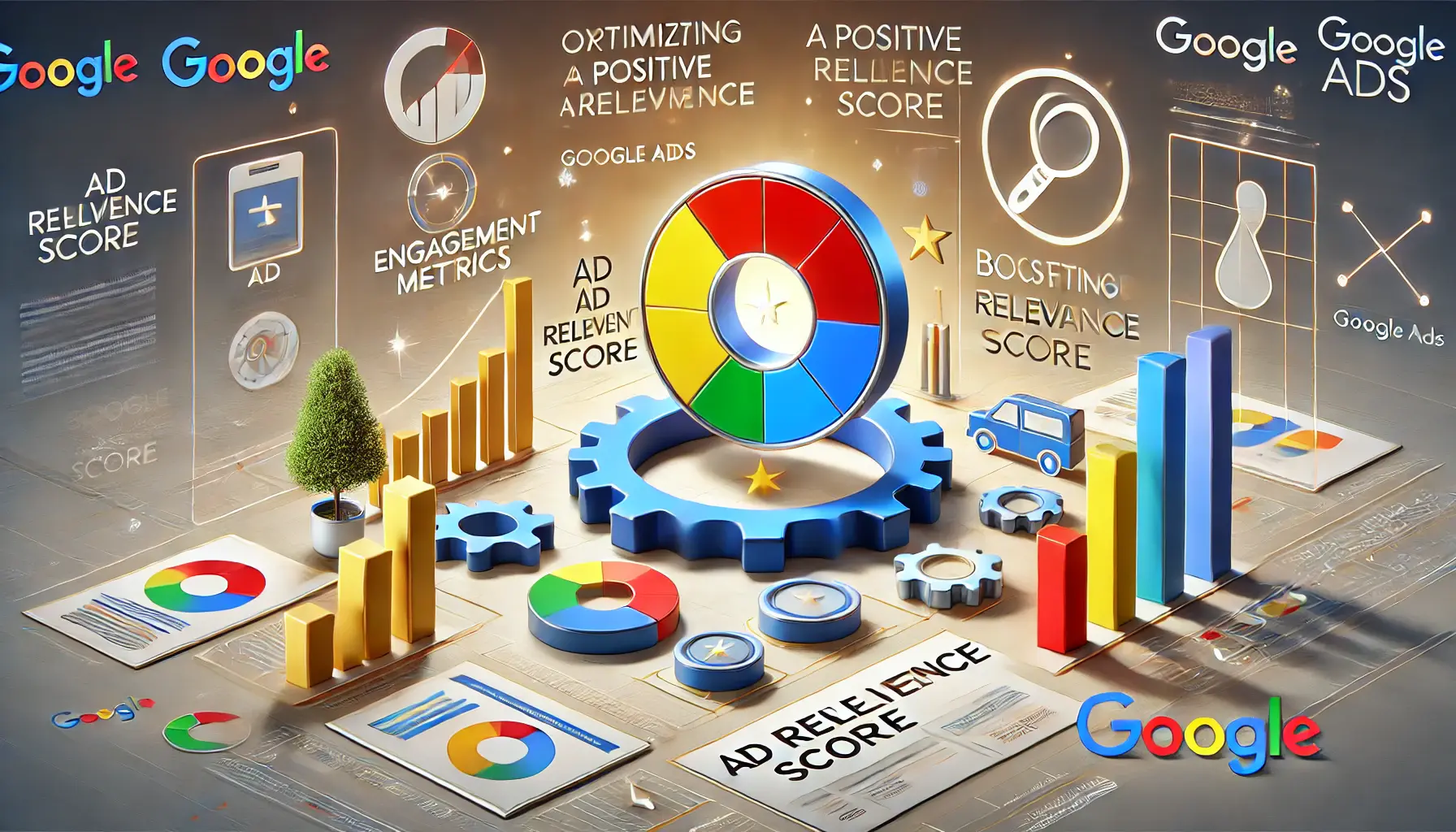
Illustration of strategies to boost ad relevance score in Google Ads.
How to Optimize for a Positive Ad Relevance Score
Improving ad relevance score involves careful attention to ad content, keywords, and landing page experience.
Here are some effective strategies:
- Include keywords in ad copy: Use targeted keywords within your ad copy to reinforce ad relevance and connect with user search intent.
- Write appealing ad copy: Focus on clear, concise messaging that addresses user needs and highlights the benefits of your product or service.
- Optimize the landing page: Ensure that your landing page offers a seamless experience, aligning closely with the ad content to meet user expectations.
Illustration of tracking and monitoring ad relevance metrics in Google Ads.
Tracking and Monitoring Ad Relevance Metrics
Monitoring ad relevance metrics can inform ongoing campaign optimizations.
Google Ads provides tools to help you track ad relevance and make data-driven adjustments.
Here are ways to monitor and manage ad relevance:
- Use Quality Score reports: Regularly check your Quality Score and its components—ad relevance, CTR, and landing page experience—to identify areas for improvement.
- Monitor performance metrics: Track CTR, CPC, and conversion rates to evaluate how well your ad relevance optimization efforts are working.
- Apply campaign adjustments: Use insights from performance metrics to make targeted changes that improve ad relevance scores and overall campaign efficiency.

Illustration of how ad relevance score influences CPC and ad rank in Google Ads.
How Ad Relevance Score Affects CPC and Ad Rank
Ad relevance score plays a crucial role in determining both CPC and ad rank.
A high score can lead to better placements in search results at lower CPC.
Here’s how:
- Improvement in ad rank: A higher ad relevance score improves ad rank, increasing the likelihood of appearing in premium positions.
- Lower CPC: Highly relevant ads tend to incur lower CPC as Google rewards relevancy with cost reductions.
- Increased visibility and engagement: Highly relevant ads enjoy better positioning and reduced costs, reaching more users and boosting visibility and engagement rates.
By optimizing your ad relevance score, you can achieve better placements, lower costs, and higher engagement rates for your Google Ads campaigns.
This approach enhances the overall effectiveness of your digital advertising efforts.
Optimizing ad content, keywords, and landing page experience positively impacts ad relevance scores and Quality Score.
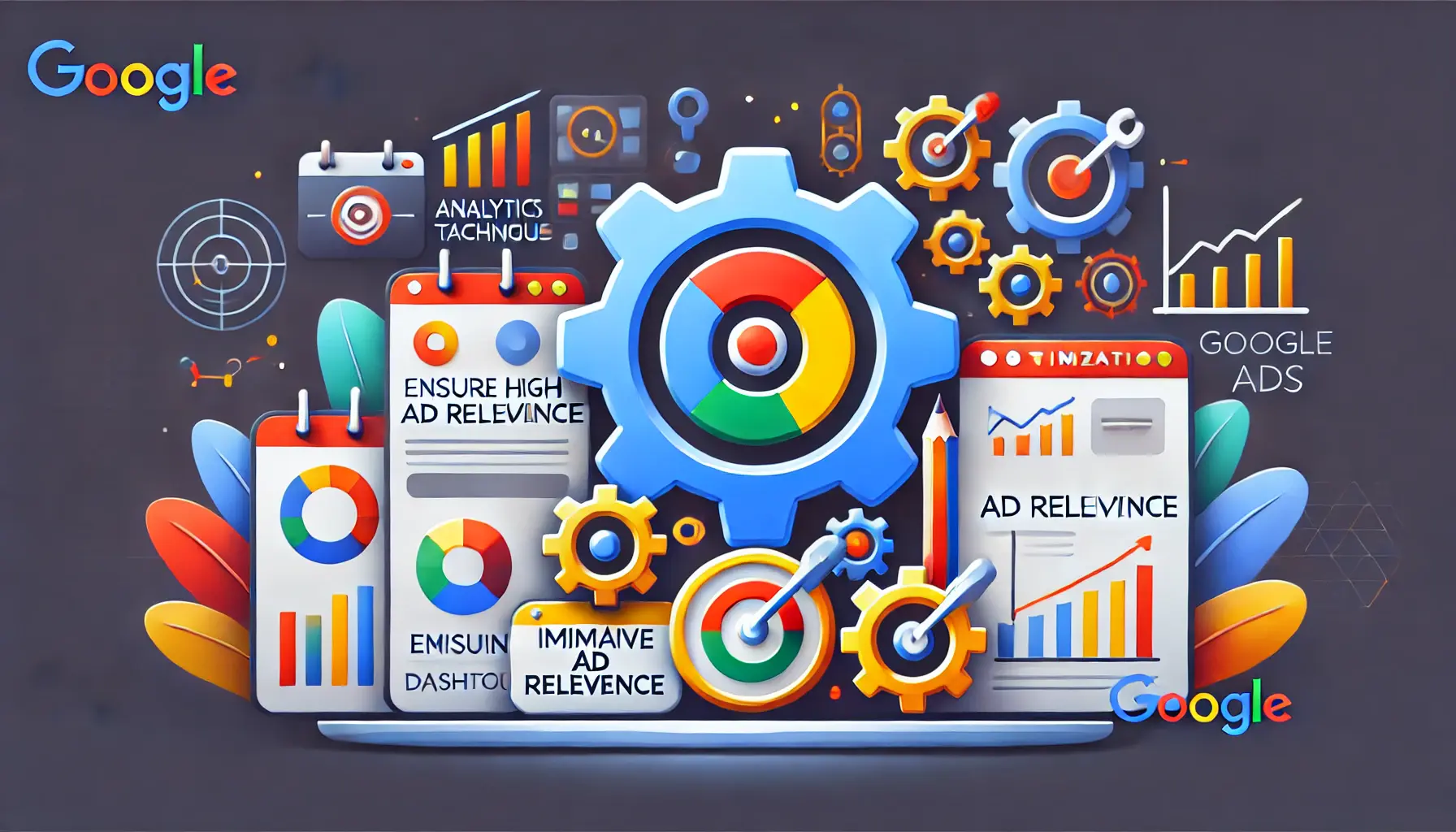
Illustration of tools and techniques to maintain high ad relevance in Google Ads.
Tools and Techniques to Ensure High Ad Relevance
Ensuring high ad relevance in Google Ads requires continuous optimization and careful monitoring.
Google Ads provides a range of tools that can help maintain and even increase ad relevance over time.
By leveraging these tools and implementing strategic practices, advertisers can create ads that consistently resonate with users and deliver outstanding results.
Let’s explore some of the key tools and strategies for sustaining high ad relevance.

Illustration of using Google Analytics to gain audience insights for ad targeting.
Use Google Analytics for Audience Insights
Google Analytics provides deep insights into how users behave on your website, allowing you to understand their preferences and interactions.
By analyzing this data, you can make targeted changes to your Google Ads campaigns and ad copy, ensuring ongoing relevance.
Here’s how Google Analytics can support ad relevance:
- Audience behavior tracking: Identify which content resonates most with users and adjust your ad messaging to reflect these preferences.
- Demographic insights: Gather key demographic details, such as age and location, to fine-tune audience targeting and improve relevance.
- Conversion paths analysis: Track the customer journey to see which ads lead to the most conversions and adjust campaigns accordingly.
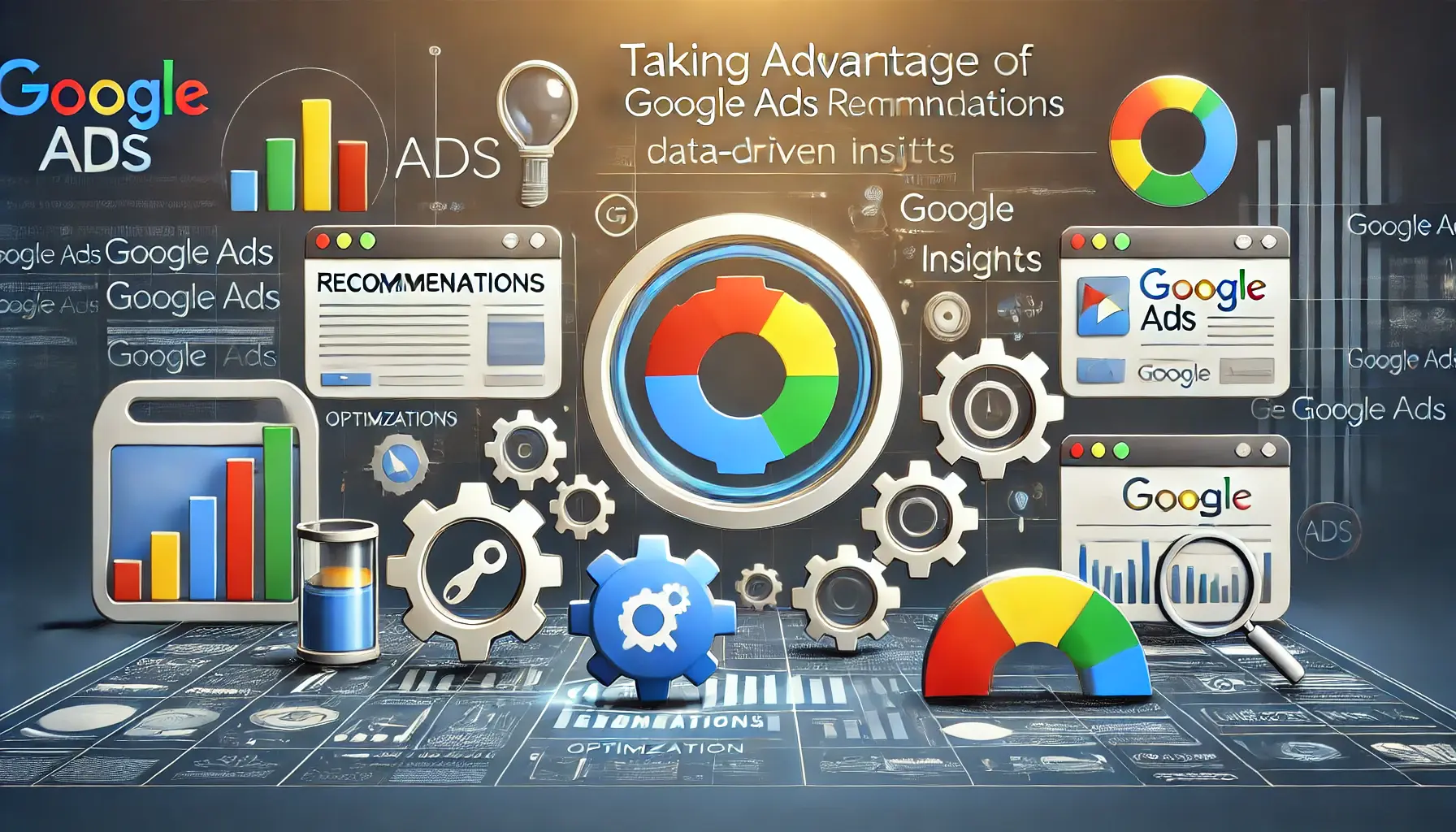
Illustration of leveraging Google Ads recommendations for ad improvements.
Taking Advantage of Google Ads Recommendations
Google Ads recommendations are designed to help improve ad performance by providing actionable insights tailored to your campaign’s needs.
These suggestions can help you identify opportunities to increase ad relevance and engagement.
Here’s how to make the most of Google Ads recommendations:
- Optimize keywords and targeting: Review keyword recommendations to find terms with higher relevance potential and adjust targeting based on audience insights.
- Utilize responsive search ads: Test multiple headlines and descriptions to better match user intent, as recommended by Google.
- Follow bidding suggestions: Use Google’s bidding recommendations to adjust bids for optimal placements and increased ad visibility.
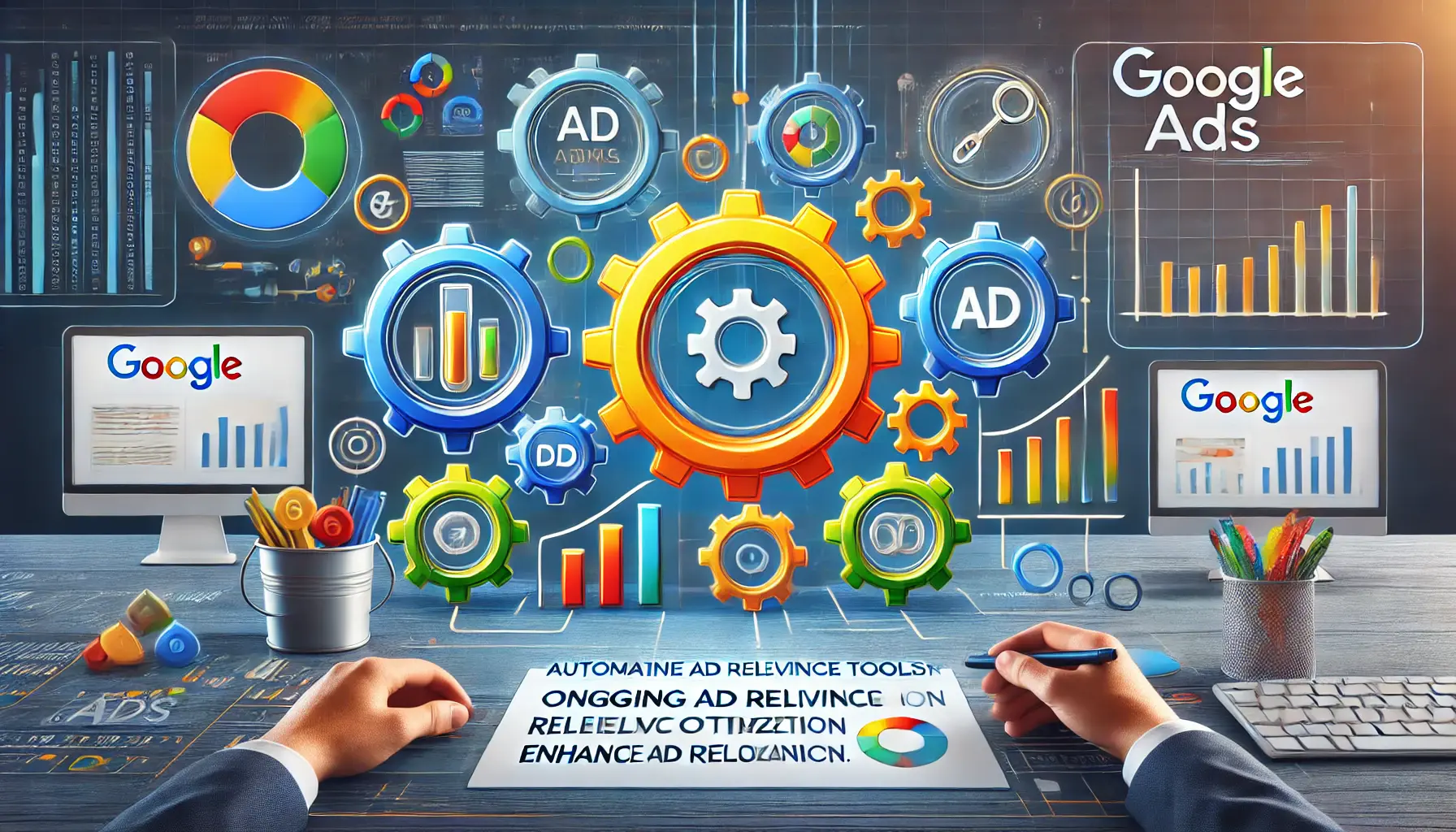
Illustration of automated tools for continuous ad relevance optimization in Google Ads.
Automated Tools for Ongoing Ad Relevance Optimization
Automation can streamline ad relevance maintenance by handling repetitive tasks and enabling real-time, data-driven decisions.
Google Ads offers several automation options that can help maintain and improve ad relevance:
- Smart Bidding: This machine-learning-based bidding strategy automatically adjusts bids based on conversion likelihood, ensuring ads reach the most relevant audience.
- Dynamic ad insertion: Dynamic ads adjust content based on user search terms, increasing relevance by aligning ad copy with user intent.
- Automated A/B testing: Continuously test different ad elements to identify the most effective combinations for maintaining ad relevance.
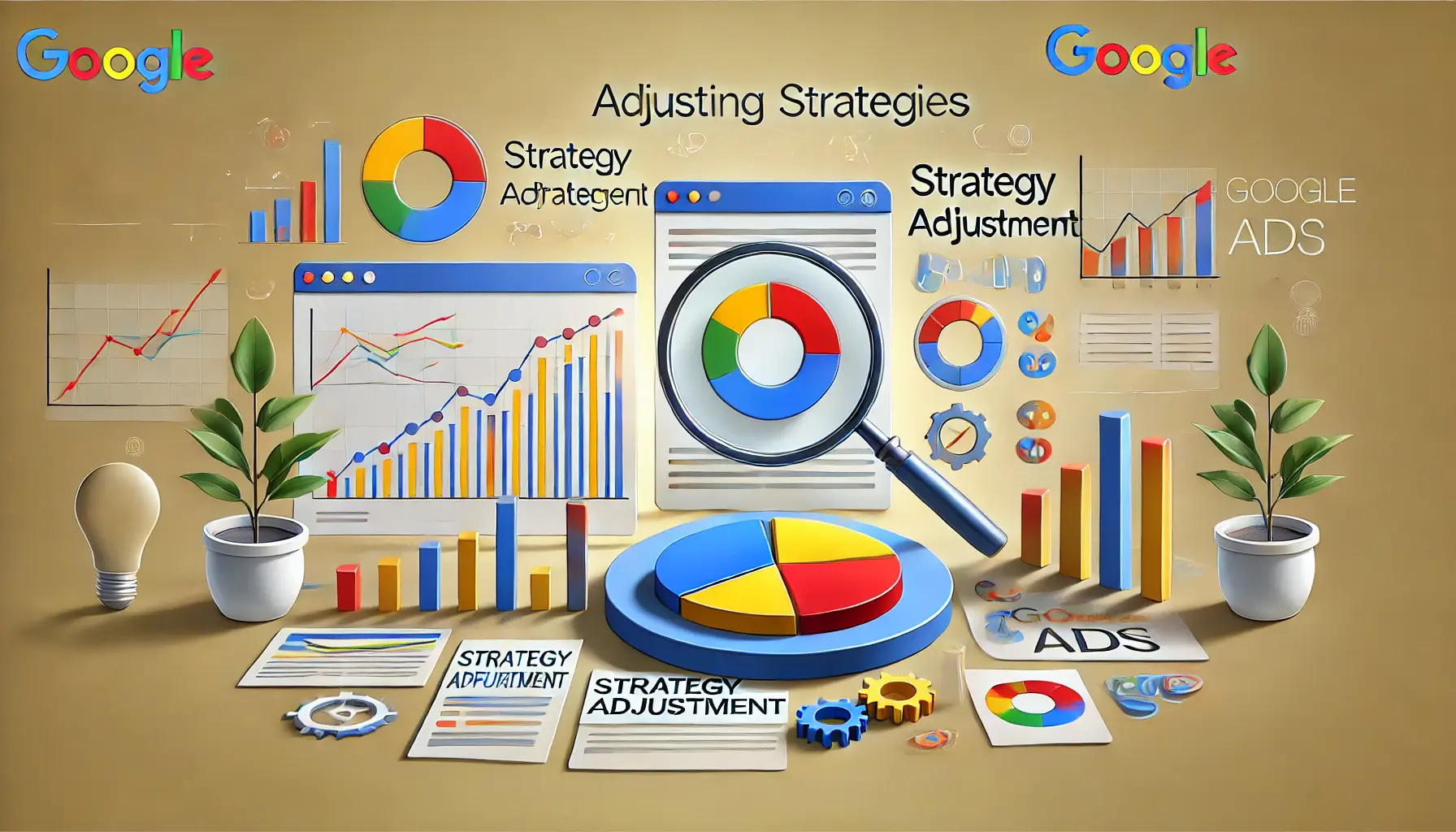
Illustration of optimizing ad strategies based on performance data in Google Ads.
Adjusting Strategies Based on Ad Performance
Regularly reviewing ad performance and adapting strategies as needed is essential for maintaining high ad relevance.
By focusing on performance metrics, you can make informed adjustments that keep your ads aligned with audience expectations.
Consider the following practices:
- Analyze CTR and conversion rates: Track these metrics to assess ad effectiveness and make targeted adjustments to improve relevance.
- Refine targeting based on performance: Periodically review audience targeting to ensure ads reach the most relevant users, enhancing ad relevance over time.
- Continuously update ad copy: Refresh ad content regularly to stay aligned with trends and user preferences, maintaining long-term relevance.
By leveraging these tools and strategies, you can establish a sustainable approach to maintaining high ad relevance in Google Ads.
This ensures that your campaigns remain effective, reach the right audiences, and maximize overall performance.
Use Google Analytics, Smart Bidding, and A/B testing to maintain and improve ad relevance effectively.
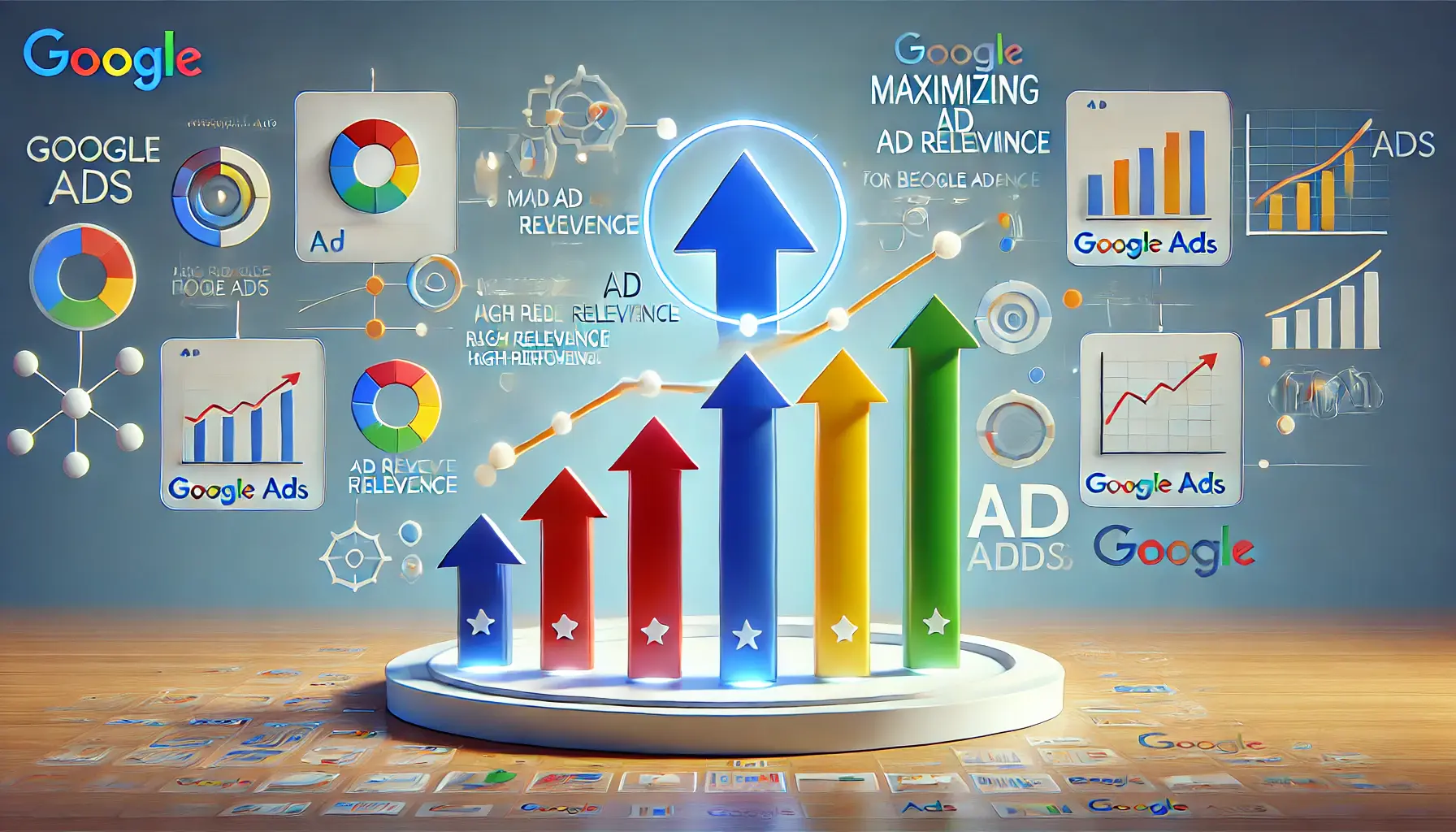
Illustration of achieving high ad relevance to excel in Google Ads.
Maximizing Ad Relevance to Excel in Google Ads
In any effective Google Ads campaign, achieving high ad relevance is essential.
By closely aligning your ads with user intent, search terms, and audience expectations, you not only improve the ad’s performance but also enhance the efficiency of your budget.
Ad relevance influences numerous aspects of your campaign, including Quality Score, click-through rate (CTR), cost per click (CPC), and overall ad visibility.
When your ads are relevant to the targeted audience, they foster greater engagement, improved conversionA desired action taken by a user, such as making a purchase or signing up. rates, and higher return on investment (ROI).

Illustration of important insights for improving ad relevance in Google Ads.
Key Insights on Ad Relevance
- Understanding Ad Relevance: Ad relevance reflects how well your ad aligns with the user’s search intent, impacting key performance indicators like CTR and Quality Score.
- Crafting Relevant Ads: Use the right keywords, write engaging ad copy, and select ad formats that resonate with users and enhance relevance.
- Leveraging Audience Insights: Utilize demographic, interest, and behavioral data to customize ads for your audience, ensuring continuous relevance.
- Increasing Ad Relevance Score: Focus on high-quality ad copy, keyword alignment, and consistent landing page experiences to boost relevance scores and reduce costs.
- Using Tools and Strategies: Leverage Google Ads tools like Google Analytics, Smart Bidding, and automated A/B testing to sustain and increase ad relevance over time.
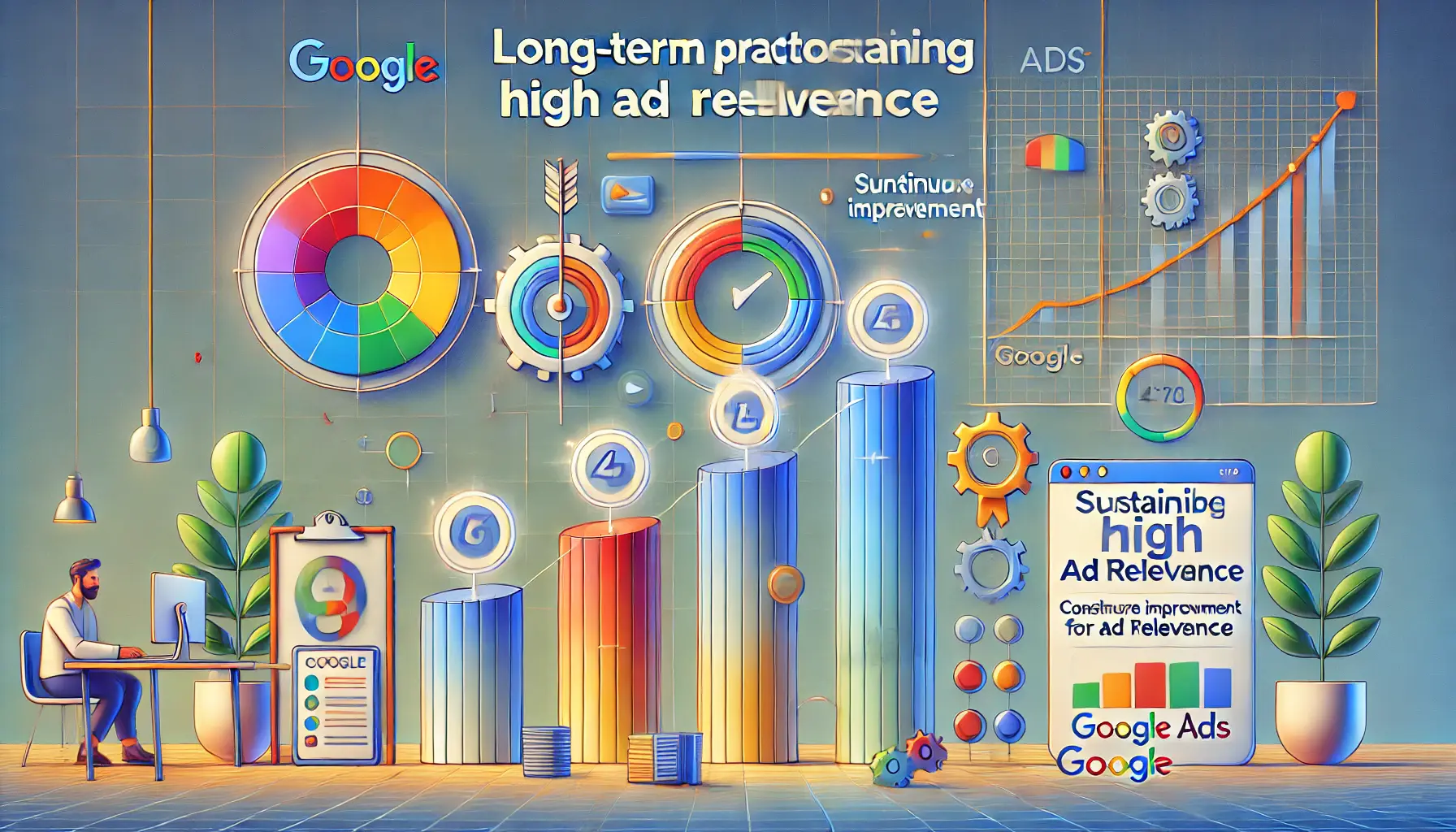
Illustration of long-term strategies to maintain high ad relevance in Google Ads.
Long-Term Practices for Sustaining High Ad Relevance
Achieving long-term ad relevance requires a strategic approach to monitoring and updating campaigns.
Consider implementing these best practices:
- Regular Performance Reviews: Analyze CTR, CPC, and conversion rates to evaluate ad relevance and identify areas for improvement.
- Audience Retargeting: Periodically review audience targeting settings to adapt to changes in user preferences and behaviors.
- Continuous Content Refresh: Regularly update ad copy to reflect the latest trends and user interests, ensuring ad relevance over time.

Illustration of developing a sustainable approach for ad relevance in Google Ads.
Building a Sustainable Approach to Ad Relevance
By prioritizing ad relevance, you establish a foundation for successful Google Ads campaigns that capture user interest and deliver results.
High ad relevance enhances not only campaign performance but also strengthens brand reputation by providing value to users through meaningful and targeted interactions.
Applying these strategies requires a commitment to ongoing ad relevance, using data-driven adjustments, audience insights, and creative optimization.
Maintaining high ad relevance in Google Ads is an ongoing process that demands analytical precision and creative adaptability.
By applying the tools and strategies outlined in this article, you can ensure that your ads remain impactful, cost-effective, and aligned with your audience’s needs.
In essence, ad relevance is the key to building lasting connections, maximizing campaign potential, and securing a competitive edge in digital advertising.
Ad relevance boosts Quality Score, lowers CPC, and increases CTR, which ultimately enhances ROI.
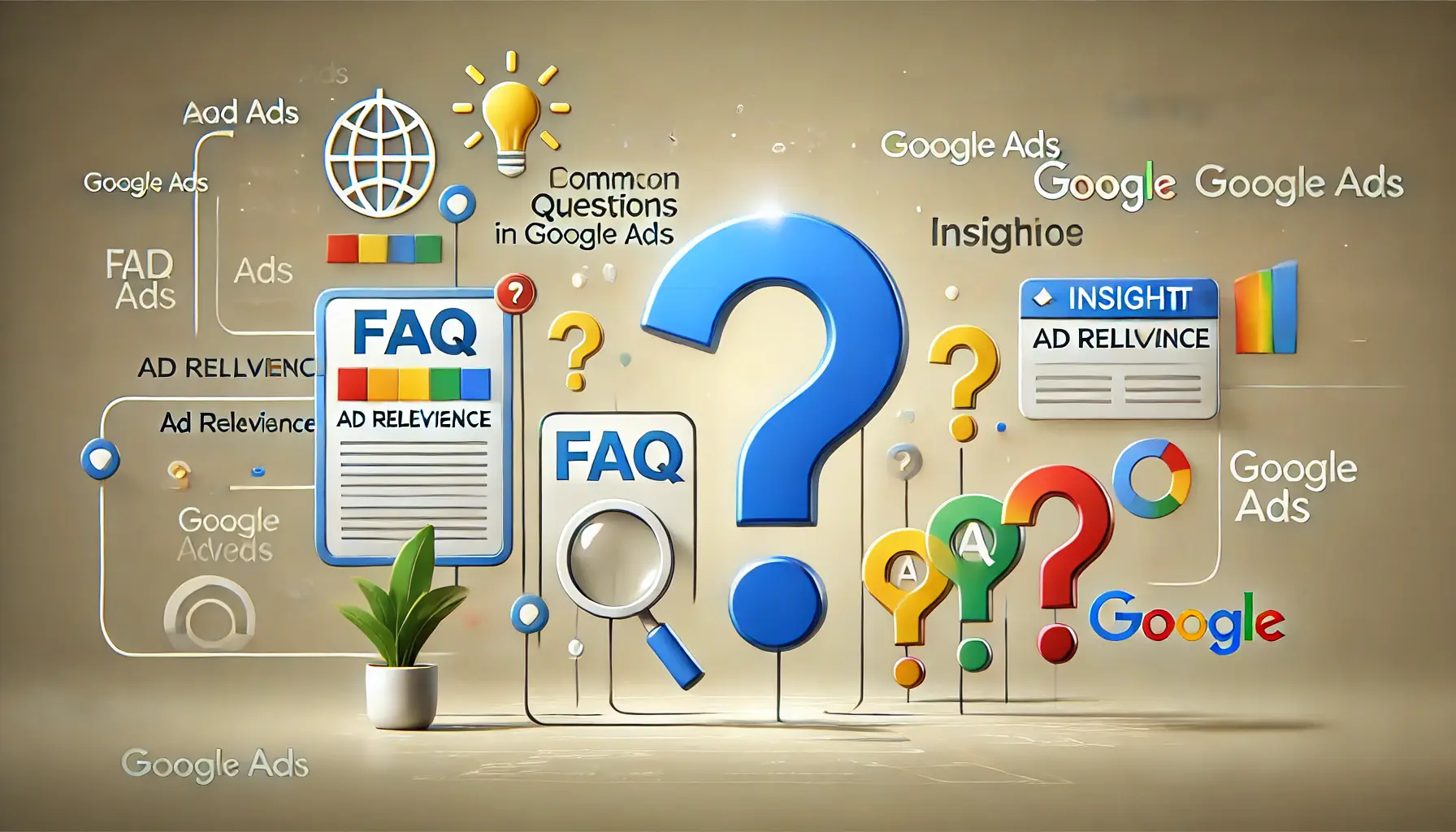
Illustration of common questions and answers about ad relevance in Google Ads.
Your campaigns can be managed by an agency specialized in Google Ads, check out our service page.
Questions Commonly Asked About Ad Relevance in Google Ads
This section addresses some of the most commonly asked questions about ad relevance and strategies for maximizing ad performance in Google Ads.
These answers provide insights into improving ad alignment, audience targeting, and campaign cost-efficiency.
Ad relevance is the relationship between your ad and the user’s search intent or targeted keywords.
Many performance metrics, such as click-through rate (CTR), Quality Score, and cost per click (CPC), depend on ad relevance.
High ad relevance improves your Quality Score by aligning the ad closely with keywords and user intent.
This leads to better ad positions, lower costs, and increased CTR in Google Ads.
To increase ad relevance, include targeted keywords in ad copy, create engaging ads, ensure landing pages are relevant, and use audience insights to align ads with user preferences and search behaviors.
Keyword selection ensures your ad reaches users with matching intent, boosting relevance and improving Quality Score, CTR, and the chance of connecting with the right audience for conversions.
Audience targeting enables you to reach users with specific demographics, interests, or behaviors, helping ensure your ad resonates with the intended audience and aligns with their search intent.
Ad copy directly impacts relevance by delivering a message that aligns with user search intent.
Engaging, relevant ad copy increases CTR, Quality Score, and overall ad effectiveness.
Landing page experience contributes to ad relevance by ensuring users find what they expect after clicking.
A relevant landing page aligned with ad content improves Quality Score and user satisfaction.
Tools such as Google Analytics, Smart Bidding, responsive search adsGoogle ads that automatically adjust content to show the most relevant combinations of headlines and descriptions., and A/B testing help maintain and improve ad relevance by enabling data-driven adjustments and ongoing optimization in Google Ads campaigns.
Track and improve ad relevance using Google Ads’ Quality Score report and performance metrics like CTR, CPC, and conversion rates, allowing for data-driven optimization adjustments.



